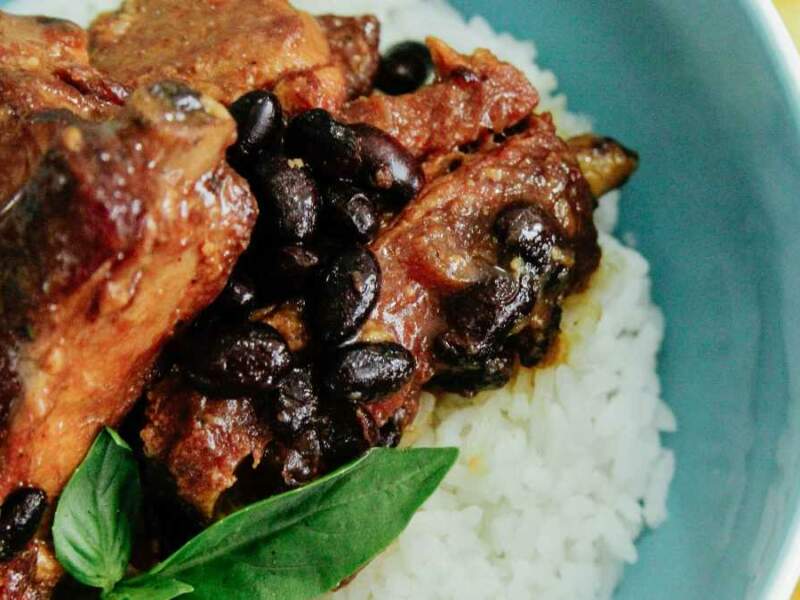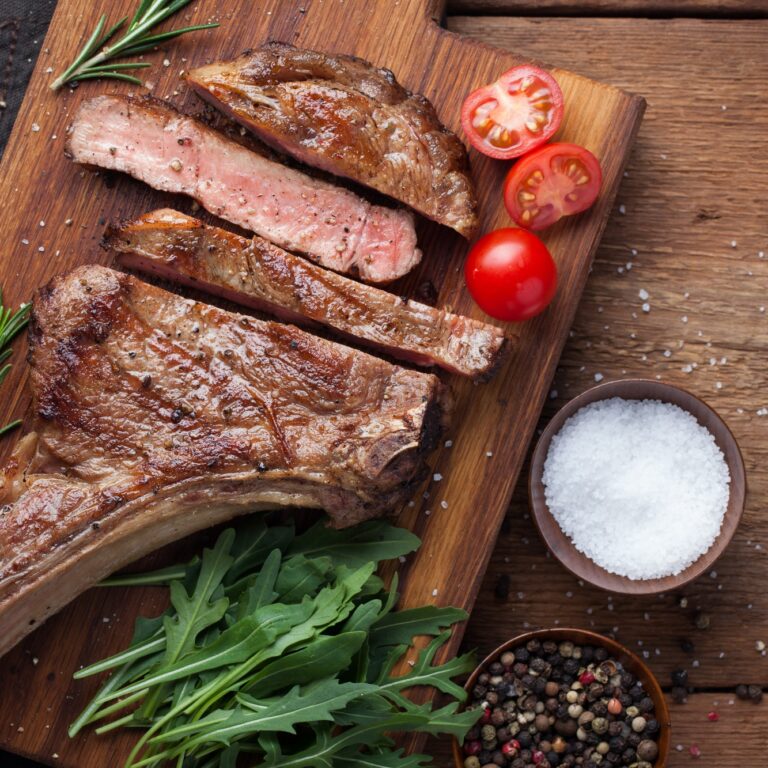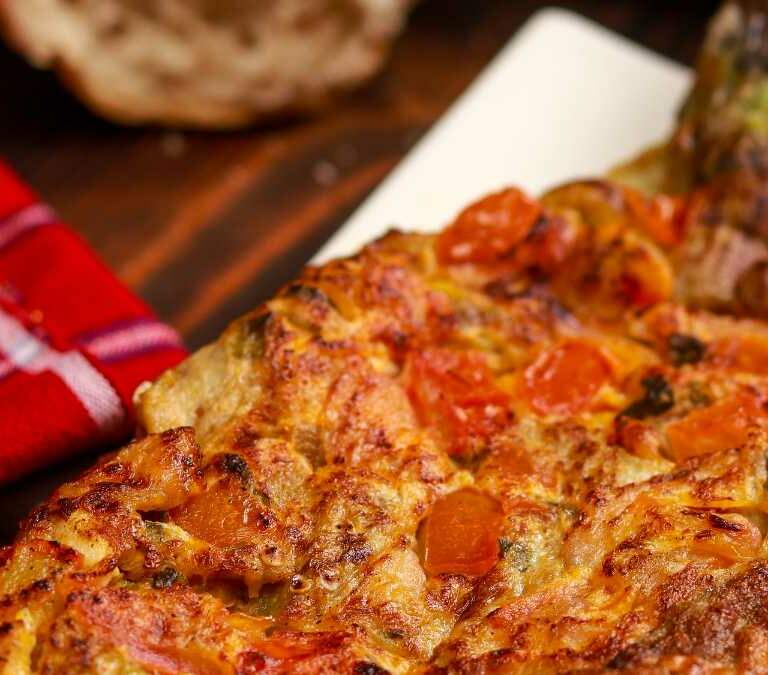
The Pork Humba is one of the most decadent pleasures there is. It’s gooey, salty, sweet, and sour pork fat melting in your mouth. As a kid, Pork Humba was special – it meant relatives gathering, picking pork fat from the pot, and lapping up the savory juices that took your soul to an out-of-body experience.
This delectable pork stew is very nostalgic and I am thrilled to share with you some stories, practical tips, and a simplified recipe of this mouthwatering dish, allowing you to effortlessly recreate the flavors of happy occasions in your very own kitchen.
The aroma of frying and stewing pork fat triggered happy memories of watching the men butcher pigs in the backyard and family stories shared over cooking in large “talyasi” and “kawa” -huge woks only taken out for special occasions. You can only taste this pork dish during wedding feasts and it is one of the last dishes served on the table, just before a dessert of bananas and Kalamayhati (a creamy caramel of coconut and matamis na bao.)
I actually have the impression that they only cook this so as not to waste the pork fat. As such, the humba captures both the Filipino ingenuity for making something from excess materials, to minimize waste and maximize resources. As I grew up though, I realized that it’s actually a cook’s privilege and a dish that families would fight over for taking home; Lol.
The vinegar and sugar also lend to the preservation of the leftover humba making it a great prepared ahead meals taken out when it suits your fancy. For busy moms, that may be one of the greatest gifts of the humba. And it’s so easy to cook that you can cook a batch or cook in a slow cooker while watching a movie with the kids, monitoring homework, or checking emails. The aromas and sounds will transport you to happy events and occasions. And when it’s done, you have a comfort food to nourish your body and soul.
Forget gourmet meals requiring precise timings and multiple pots. The humba is the culinary version of MacGyver, improvising prosperity from usually unused resources. In that way, it is a Philippine “stream of consciousness” dish – a window into the Filipino soul.
So the next time life feels too complicated, or too stressful, seek refuge in a humble pork humba.
Now go make some humba while thinking of MacGyver and get cooking! The recipe is simple and can easily be scaled up to feed a small army. Feel free to experiment with different spice blends to suit your family’s tastes.
Here’s the recipe!

Ingredients
- 1 kg pork belly, cut into chunks
- 1/2 cup soy sauce
- 1/2 cup vinegar
- 1/2 cup brown sugar
- 4 cloves garlic, minced
- 1 teaspoon black peppercorns
- 2 bay leaves
- 2 star anise
- 1 cup pineapple juice
- 2 tablespoons fermented black beans (tausi), rinsed and drained
- Cooking oil
Instructions
Make the marinade:
- Combine soy sauce, vinegar, brown sugar, garlic, and pepper in a bowl.
- Mix until the sugar dissolves.
Marinate the pork:
- Add pork belly pieces to the marinade and coat well.
- Cover and refrigerate for at least 1 hour, or overnight.
Cook the pork:
- Heat oil in a pan over medium-high heat.
- Remove pork from marinade and sear until browned.
- Transfer pork to a pot.
- Pour marinade into the pot.
- Add bay leaves, star anise, and pineapple juice.
- Stir in rinsed fermented black beans.
Simmer the humba:
- Bring to a boil, then reduce heat and simmer covered for 1 to 1.5 hours, until pork is tender.
- Stir occasionally and add water if needed.
- Once the pork is cooked, skim off any excess fat that may have accumulated on the surface of the sauce.
When ready:
- Taste and adjust seasoning if needed.
- Garnish with spring onions or fried garlic (optional).
- Serve with rice and a side of pineapples..
Notes
This pork dish is perfect for the slow cooker. You can continue cooking it on the slow cooker after browning and set it on low for 8 hours. If you prefer a thicker sauce, you can transfer the sauce to a saucepan and simmer it on the stovetop over medium heat until it thickens to your liking. Then pour it back over the pork before serving.
By using a slow cooker, you can conveniently prepare Humba without constant monitoring. The low and slow cooking method allows the flavors to develop beautifully, resulting in tender and flavorful pork.
Tags
Practical Tips for Perfecting Humba:
- Selecting the Right Cut: Opt for pork belly or legs, as they provide the ideal balance of tender meat and succulent fat. These cuts readily absorb flavors, resulting in a more delicious and satisfying dish.
- Marinating for Depth: The key to an exceptional Humba lies in its marinade. Combine soy sauce, vinegar, brown sugar, garlic, and a hint of black peppercorns to create a robust blend that imparts a complex flavor profile to the meat. Allow the pork to marinate for at least an hour, or overnight for an even more intense taste.
- Braising to Perfection: Once marinated, sear the pork in a hot pan until golden brown, infusing it with a rich caramelized crust. Transfer the meat to a pot and pour in the marinade, adding additional ingredients such as bay leaves, star anise, and pineapple juice to elevate the flavors further. Allow the Humba to simmer gently on low heat, allowing the meat to become tender and the flavors to meld together.
- Unleashing the Umami: To unlock the umami notes of Humba, add a unique touch with fermented black beans or tausi. These little flavor powerhouses take the dish to new heights, giving it an earthy and distinct taste.
- The Art of Patience: While Humba can be made relatively quickly, the true essence of this dish lies in its slow-cooked magic. Allow the flavors to develop over time by simmering the Humba for an hour or two, until the meat is melt-in-your-mouth tender and the sauce has thickened to a luscious consistency.
Humba versus Pata Tim
While both Humba and Pata Tim are Filipino pork dishes with similar characteristics, there are distinct differences between the two in terms of their ingredients and cooking methods. Here’s a breakdown of the key differences:
- Cut of Pork:
- Humba: Humba typically uses pork belly or pork shoulder (kasim), which provides a balance of tender meat and succulent fat.
- Pata Tim: Pata Tim uses pork leg or trotters, known as “pata” in Filipino. The collagen-rich meat and gelatinous skin of the pork leg give Pata Tim its unique texture.
- Flavors and Seasonings:
- Humba: Humba has a sweet and savory flavor profile, with a hint of tanginess from the vinegar. It often includes soy sauce, brown sugar, garlic, and spices like black peppercorns, bay leaves, and star anise. It also includes fermented black beans (tausi) for an added umami kick.
- Pata Tim: Pata Tim has a savory and slightly sweet taste. It commonly features a combination of soy sauce, oyster sauce, sugar, garlic, and ginger. The flavors are more focused on umami and depth.
- Cooking Techniques:
- Humba: Humba is typically prepared by marinating the pork in a mixture of soy sauce, vinegar, and spices. It is then seared to develop a caramelized crust before simmering in the marinade until the pork becomes tender and the sauce thickens.
- Pata Tim: Pata Tim involves simmering the pork leg or trotters in a flavorful braising liquid until the meat becomes tender. The cooking process requires a longer time due to the collagen-rich nature of the pork leg, which needs to be broken down to achieve a melt-in-your-mouth texture.
- Sauce Consistency:
- Humba: The sauce in Humba is usually thick and coats the pork pieces, creating a luscious and rich texture.
- Pata Tim: Pata Tim has a slightly lighter sauce consistency compared to Humba, which allows the gelatinous nature of the pork leg to shine through.

Hello! I am April
...I don't know exactly what a prayer is. I do know how to pay attention, how to fall down. into the grass, how to kneel down in the grass, how to be idle and blessed, how to stroll through the fields, which is what I have been doing all day. Tell me, what else should I have done? Doesn't everything die at last, and too soon? Tell me, what is it you plan to do with your one wild and precious life?
- That Summer Day. Mary Oliver Tweet











